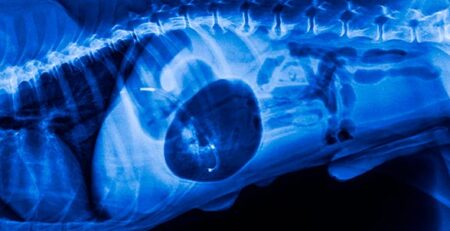Dog microchip: not only a legally required practice but more importantly a gesture of love and respect for your best friend
Despite the fact that it is a legally required and non-invasive practice, there are still many humans who, out of laziness or because they do not think it is necessary, decide not to microchip their dogs without realizing that it is a true gesture of love and respect for them.
The implantation of a microchip, with the subsequent registration with the dog registry, is in fact the way to make your dog’s existence official, as well as one of the safest ways to help your dog get home in case of theft or loss.
The microchip
is a small electronic device
, just 11 millimeters long and 2 millimeters wide, harmless to the animal, that is applied subcutaneously, in the portion of skin on the neck behind the left ear, by injection.
No pain during its application, except for the “pinch” of the injection, but how can we blame our four-legged friend, no one likes a sting.
Microchipping: benefits and safety for the dog
The application of the microchip and
the enrollment in the Canine Registry
that follows, not only bring the pet owner into compliance with the law, but are a source of benefits, protections and security for the dog and its human companion.
Through the application of the microchip, there is the formalization of the dog’s existence, fully recognized as a member of the family.
The dog’s personal booklet contains the four-legged animal’s data, the owner’s biographical data and the alphanumeric code corresponding to the chip.
These data, transmitted by individual territorial registry offices, are reported in the National Dog Registry registry.
Microchip traces the dog back to its human
The microchip identification code traces the dog back to its owner, and if the owner does not prove that he or she has unintentionally lost the animal (he or she will have to produce the lost and found report), he or she may bitterly regret his or her action.
Recall that.
abandonment is a criminal offense.
Anyone who finds the dog, simply by taking it to a veterinarian or the traffic police, will be able to ascertain the dog’s microchip number and through the dog registry website, retrieve the owner’s information and return the fugitive home.
The usefulness of microchipping in case of dog theft
Microchipping is a good deterrent against those miscreants who plan to steal a puppy, especially a purebred one, to resell it.
A microchipped dog, in fact, can only be surrendered with the “document of surrender” between the old and new owner.
It is therefore a good idea, when getting a puppy, to check whether it is already microchipped.
Before the microchip there was the tattoo
Before microchipping was introduced in 2005, identification was done by tattooing.
This used to be affixed behind the ear or in the inner right thigh, causing not inconsiderable pain to the dog, who often had to be sedated; with the microchip, however, all it takes is a pinprick and that’s it.
The microchip is not a Gps
The microchip is not a satellite device that allows you to know where your dog is at any time, but rather a transponder made of biocompatible glass so that it does not cause any kind of rejection or discomfort.
It does not emit waves that could be harmful to the four-legged friend; a special reader supplied to traffic police, veterinarians, veterinary clinics and dog catchers is required to read the microchip.
For microchip insertion, you can contact your local veterinarian or the appropriate veterinary health authorities in your area.
Microchipping your own dog: when and where
Owners are required to microchip registration with the Regional Dog Registry of the relevant ASL company by the 60th day of the dog’s life or within 30 days of the start of non-transitory possession of the dog.
If the dog is already identified with a tattoo and the tattoo is still readable, it is not necessary to implant a new microchip; on the contrary, if the tattoo is no longer readable, a new registration with microchip insertion must be made.
The human owner of the dog must be over 18 years of age, incensed, and a resident of the region in which registration is made.
A microchipped dog cannot be re-registered unless the implanted microchip is unreadable.
If the dog is to be surrendered, all that is needed is for the old and new owners to go to the Canine Registry together to sign the surrender document by which the new family becomes the full owner of the animal.
And now that you know the usefulness of microchipping for your faithful friend and for you, don’t waste any more time and run now to book microchipping if you haven’t already done so.
To verify the presence of the microchip and for all relevant information, please contact our Staff Veterinary Doctors who are always at your disposal.











